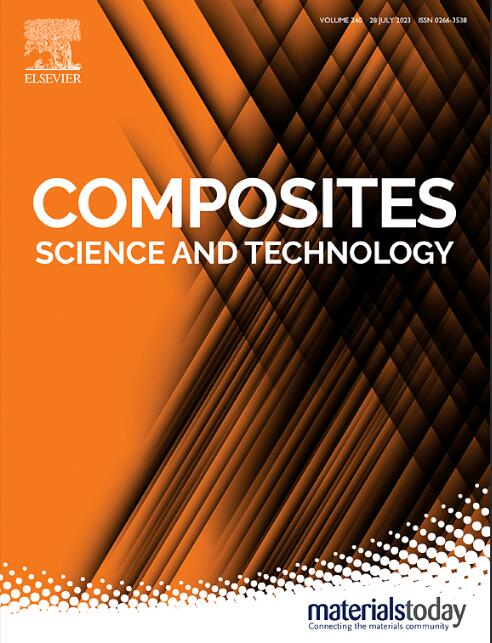增材制造CFRP结构性能优化研究
IF 8.3
1区 材料科学
Q1 MATERIALS SCIENCE, COMPOSITES
引用次数: 0
摘要
增材制造(AM)在碳纤维增强聚合物(CFRP)复合材料结构中得到了广泛的应用,特别是在实现拓扑优化设计方面具有显著的优势,但其固有的问题是纤维体积分数相对较低,孔隙率较高,在一定程度上影响了材料性能。本研究旨在提高优化后的3D打印CFRP结构的力学性能,并开发一种真空辅助热后处理技术。首先,采用水平集方法对CFRP增材制造的拓扑和长丝路径进行并行优化。优化后的CFRP结构和经验的CFRP结构都是通过3D打印来制造的,以评估拓扑优化的优势,该优化结合了快速推进技术和提高的可制造性。其次,为了进一步增强结构特性,在不同的加热条件下,对打印好的CFRP结构进行1 atm的压力后处理。第三,基于微计算机断层扫描(μCT)数据,对经过和未经过后处理的图像结构进行重构和分析。结果表明,模拟结果与实验结果的误差均在10%以下。结果表明,通过拓扑优化可使单位质量刚度(SPUM)提高47.0% ~ 52.1%,真空辅助热后处理可使结构变形进一步减少10.8% ~ 26.8%,表明增材制造CFRP结构后处理在同等材料成本下具有优势。本文章由计算机程序翻译,如有差异,请以英文原文为准。
Enhancing performance for additively manufactured optimal CFRP structures
While additive manufacturing (AM) has been widely applied for carbon fiber reinforced polymer (CFRP) composite structures and exhibited compelling advantages especially in realizing topologically optimized design, there exist certain inherent problems, such as relatively low fiber volume fraction and high porosity, somehow compromising its material properties. This study aims to enhance mechanical performances of optimized 3D printed CFRP structures and develop a vacuum-assisted thermal post-processing technique. First, a level set method is employed to carry out concurrent topological and filament path optimization dedicated to CFRP additive manufacturing. Both the optimized and empirical CFRP structures are fabricated by 3D printing to appraise the advantages of topology optimization that incorporates a fast marching technique with improved manufacturability. Second, to further enhance the structural characteristics, the printed CFRP structures are post-processed with a pressure of 1 atm under different heating conditions. Third, the structures with and without the postprocessing procedures are remodeled and analyzed based on micro-computed tomography (μCT) scan data. It is found that the errors between the remodeled simulations and experimental tests are all below 10 %. It is shown that the topology optimization enables to improve the stiffness per unit mass (SPUM) by 47.0–52.1 %, and vacuum-assisted thermal post-processing can further reduce the structural deformation ranging from 10.8 % to 26.8 %, indicating the superiority of reprocessing of additively manufactured CFRP structures with equivalent material cost.
求助全文
通过发布文献求助,成功后即可免费获取论文全文。
去求助
来源期刊

Composites Science and Technology
工程技术-材料科学:复合
CiteScore
16.20
自引率
9.90%
发文量
611
审稿时长
33 days
期刊介绍:
Composites Science and Technology publishes refereed original articles on the fundamental and applied science of engineering composites. The focus of this journal is on polymeric matrix composites with reinforcements/fillers ranging from nano- to macro-scale. CSTE encourages manuscripts reporting unique, innovative contributions to the physics, chemistry, materials science and applied mechanics aspects of advanced composites.
Besides traditional fiber reinforced composites, novel composites with significant potential for engineering applications are encouraged.
 求助内容:
求助内容: 应助结果提醒方式:
应助结果提醒方式:


